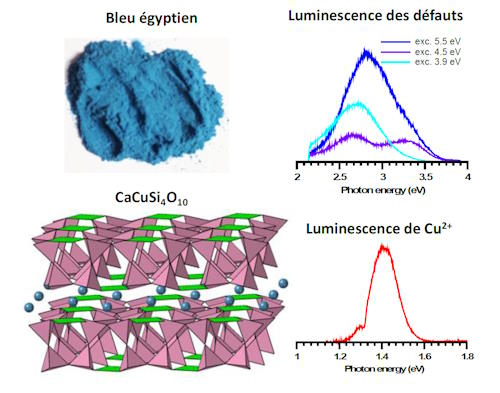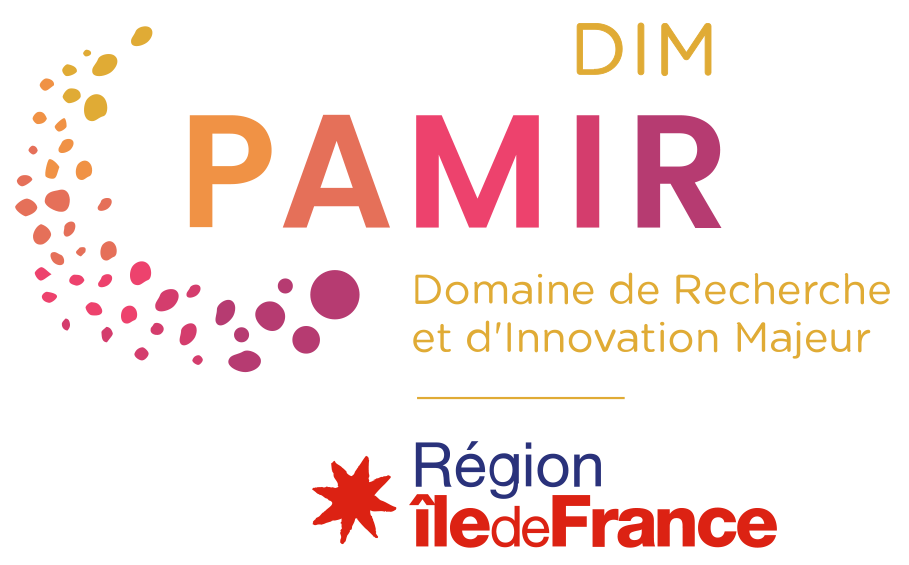
LUPA
Luminescence of antique pigments
Scientific responsibility :
- Laurent Binet
Methodological axes :
Thematic fields :
Disciplinary sectors :
Partnership :
Funding :
- DIM PAMIR
Project ID : IDF-DIM-PAMIR-2023-10-007
Summary :
Egyptian blue and green are synthetic pigment materials that were widely used in ancient Egypt and later in Greco-Roman times. Egyptian blue is mainly made up of cuprorivaite CaCuSi4O10 but often contains secondary, crystallized or vitreous phases, while Egyptian green is essentially made up of a vitreous silicate phase enriched in copper. In both cases, the color is due to Cu2+ ions. The manufacturing processes and raw materials may vary from workshop to workshop, and it is essential from an archaeological perspective to be able to reconstruct them. The aim of the internship is to use point defects, the true memory of materials, and Cu2+ ions as potential markers of the manufacturing processes for these pigments. The approach is based on preliminary work (Binet et al., J. Phys. Chem. C 2021, 125, 25189-25196) on the spectroscopic properties of Egyptian blue showing photoluminescence of defects, the informative potential of which has never yet been exploited. The internship will involve synthesizing Egyptian blue and green by varying the conditions (temperature, precursors, additives), characterizing the phases obtained by X-ray diffraction and Raman microscopy and studying the effects of the synthesis conditions on the photoluminescence of point defects and Cu2+. Additional studies using electron paramagnetic resonance may also be carried out to probe the Cu2+ environment or highlight certain point defects. The student will be trained in these various spectroscopic techniques. The internship will take place in the team Physico-Chimie des Matériaux Témoins de l’Histoire at IRCP UMR 8247. The student will be based mainly at Chimie-ParisTech, but some experiments may also be carried out at the Centre de Recherche et de Restauration des Musées de France.
Intern: Hedi Abassi
LiD’Eure »

